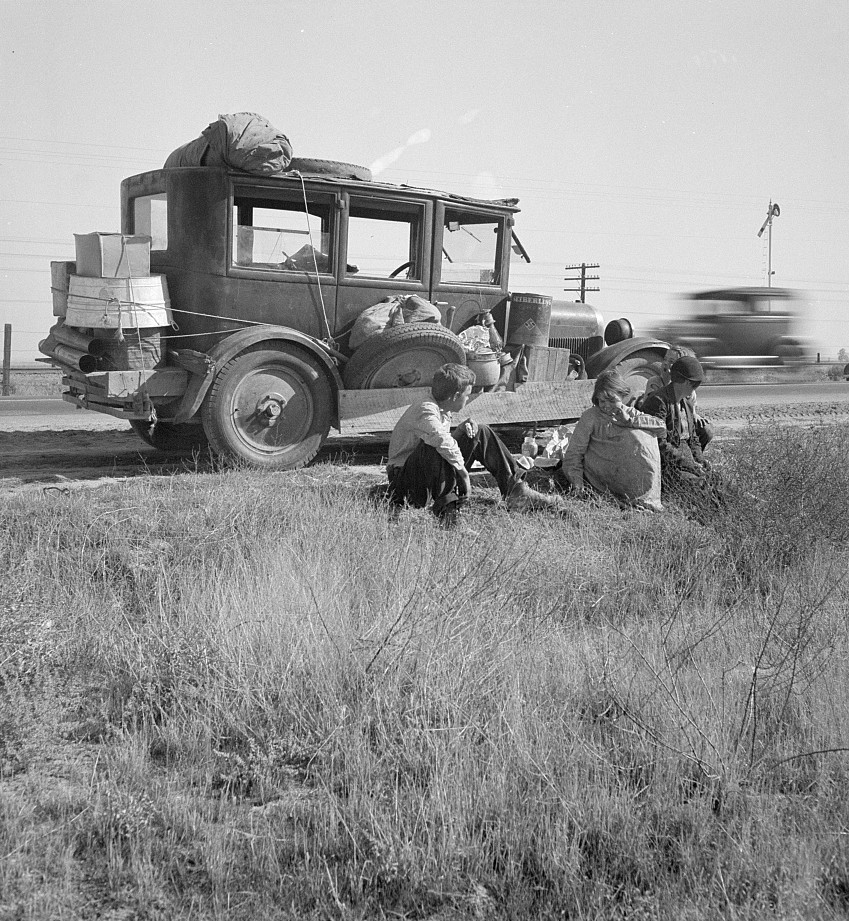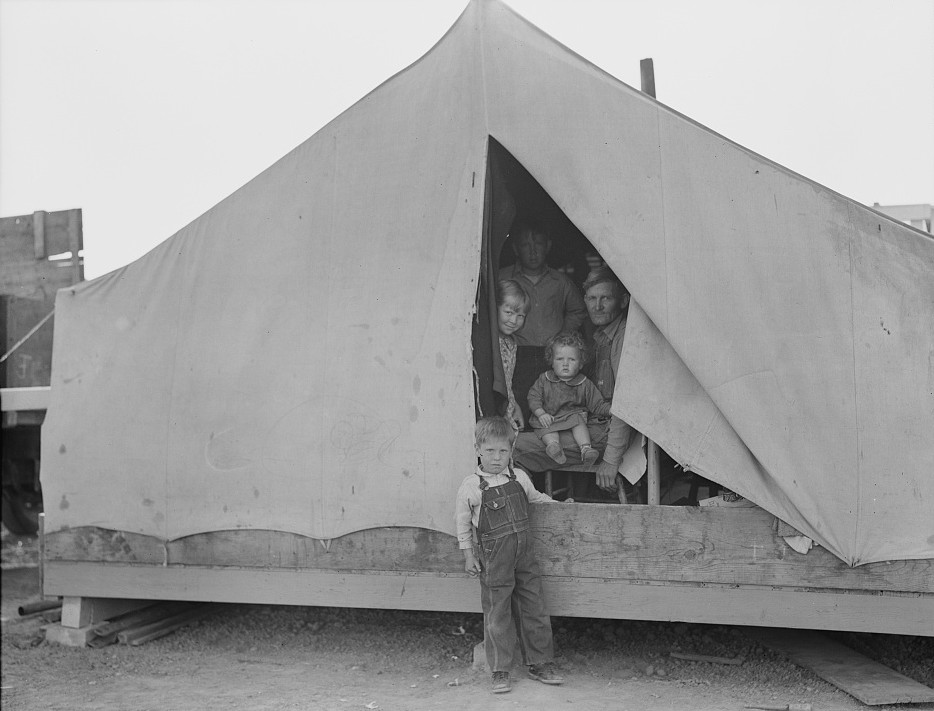Great Depression and Dust Bowl
Between the Great Depression and the Dust Bowl, families had no other course but to leave the prairie lands and immigrant to the western states to become migrant workers.
Below are vivid photographs documenting the difficulties they encountered on the road and interviews by the WPA with four men, Wayne “Gene Dinwiddie, S. C. Loop, Bill Robinson, & Roy Turner about their families’ experiences on the road to the Visalia FSA camp in California.
Oklahoma roadside encounter day laborers. “After three years, dry years, not a thing a fellow like me can do. I’d get out and go to California like the rest of them if I could get ahold of some money and get shed of my cows. Ain’t done a day’s work in four months” (cut off relief April 1, 1936) photographer Dorothea Lange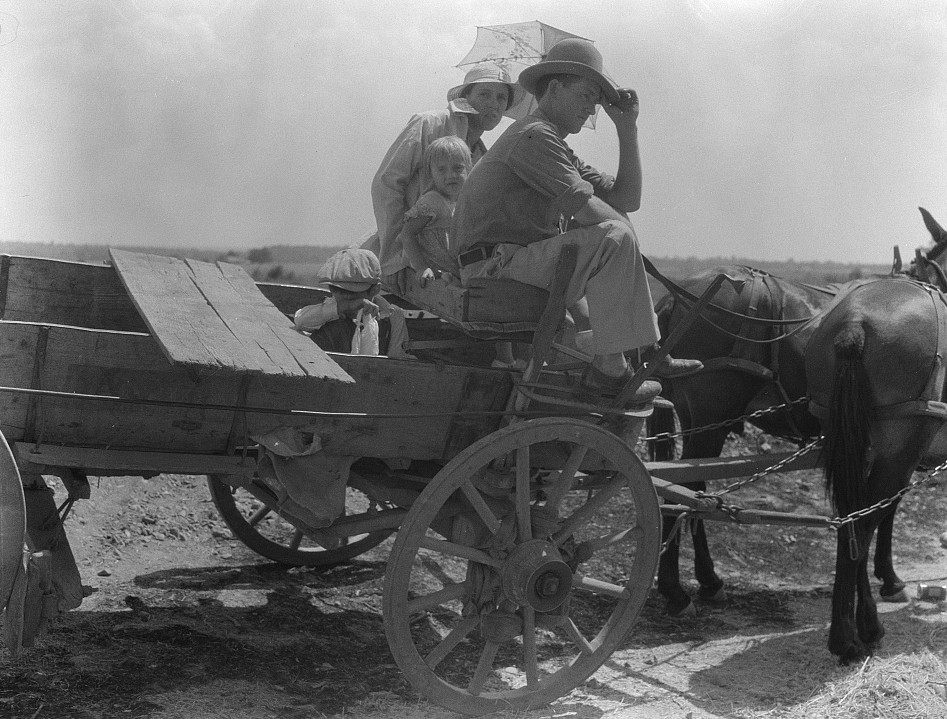
Oklahoma migrant, Texas. An example of how they fall between the relief agencies. The father, aged thirty-five, is an intelligent fellow, a painter by trade. Advanced tuberculosis, victim of an occupational disease. Ineligible for WPA (Works Progress Administration), rated as totally disabled. As a state charge under Oklahoma relief standards, the family were told the maximum relief would be seven dollars every two weeks. They lost their home, their furniture, Aug 1936 photographer Dorothea Lange 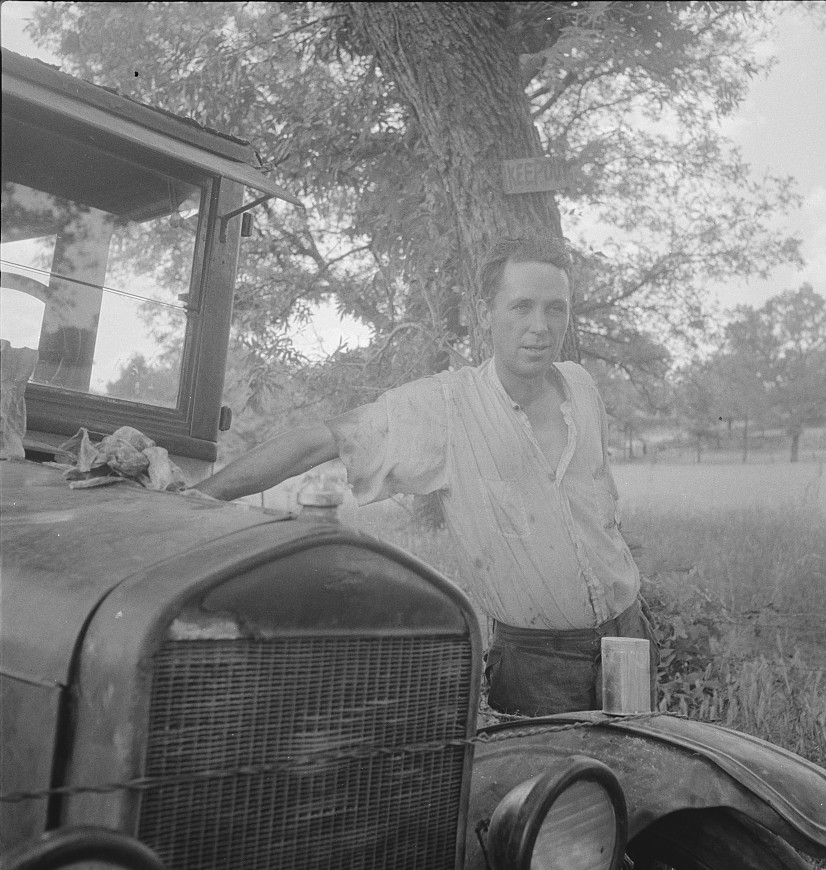
Migrant family from Oklahoma in Texas. A family of six alongside the road. An example of how they fall between the relief agencies. The father, aged thirty-five, is an intelligent fellow, a painter by trade. Advanced tuberculosis, victim of an occupational disease. Ineligible for WPA (Works Progress Administration), rated as totally disabled. As a state charge under Oklahoma relief standards, the family were told the maximum relief would be seven dollars every two weeks. They lost their home, their furniture, took to the road a year ago and when the photographs were made they were found to be without money, shelter, and without food for the four children Aug 1936 photographer Dorothea Lange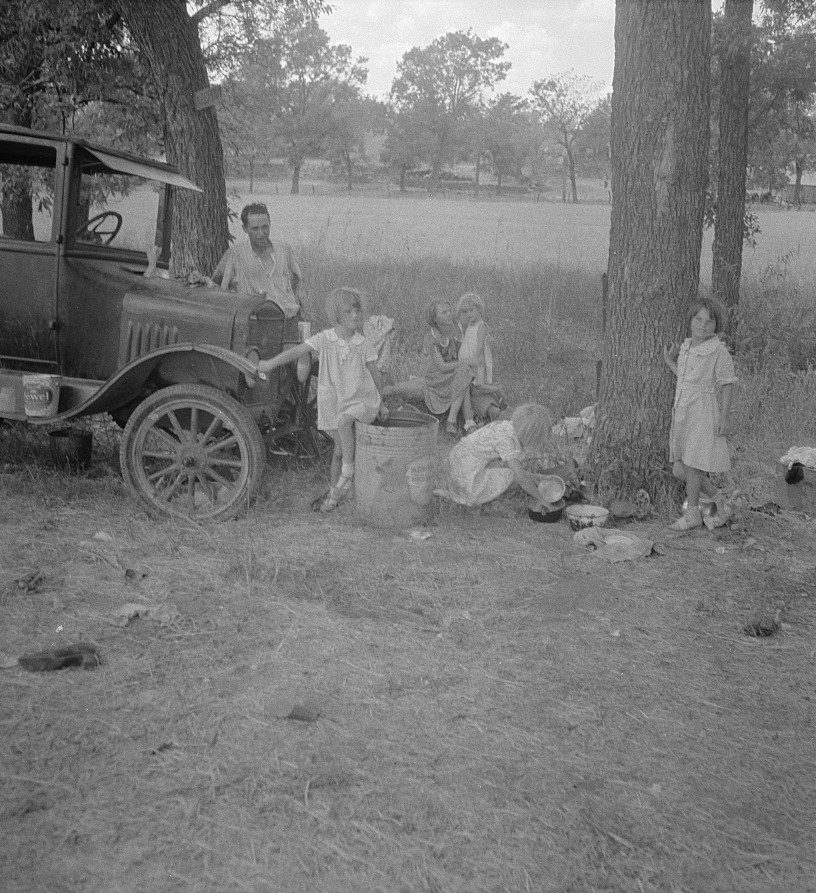
Family walking on highway, five children. Started from Idabel, Oklahoma. Bound for Krebs, Oklahoma. Pittsburg County, Oklahoma. In 1936 the father farmed on thirds and fourths at Eagleton, McCurtain County, Oklahoma. Was taken sick with pneumonia and lost farm. Unable to get work on Work Projects Administration and refused county relief in county of fifteen years residence because of temporary residence in another county after his illness – June 1938 photographer Dorothea Lange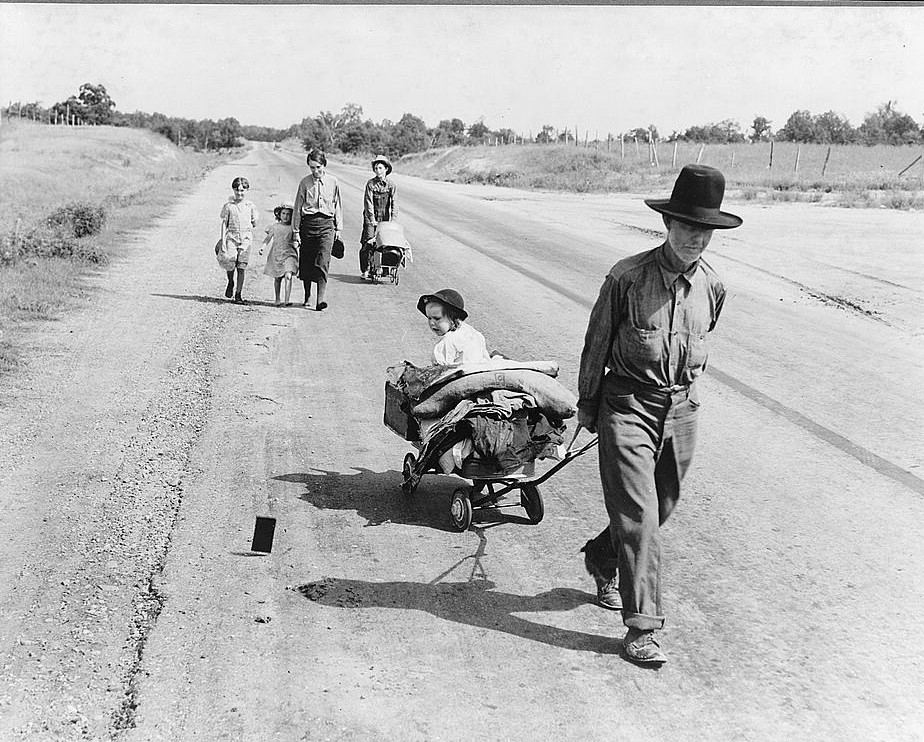
Depression refugee family from Tulsa, Oklahoma. Arrived in California June 1936. Mother and three half-grown children; no father. “Anybody as wants to work can get by. But if a person loses their faith in the soil like so many of them back there in Oklahoma, then there ain’t no hope for them. We’re making it all right here, all but for the schooling, ’cause that boy of mine, he wants to go to the University”Nov. 1936 photographer Dorothea Lange
Brawley, Imperial Valley. In Farm Security Administration (FSA) migratory labor camp. Family of mother, father and eleven children, originally from near Mangrum, Oklahoma, where he had been tenant farmer. Came to California in 1936 after the drought. Since then has been traveling from crop to crop in California, following the harvest. Six of the eleven children attend school wherever the family stops long enough. Five older children work along with the father and mother. February 23, two of the family have been lucky and “got a place” (a day’s work) in the peas on the Sinclair ranch. Father had earned about one dollar and seventy-three cents for ten-hour day. Oldest daughter had earned one dollar and twenty-five cents. Form these earnings had to provide their transportation to the fields twenty miles away. Mother wants to return to Oklahoma, father unwilling.She says, “I want to go back to where we can live happy, live decent, and grow what we eat.” He says, “We can’t go the way I am now. We’ve got nothing in the world to farm with. I made my mistake when I came out here.”photographer Dorothea Lange
In Farm Security Administration (FSA) migratory labor camp. Family, mother, father and eleven children, originally from Oklahoma, where he had been a tenant farmer. Came to California in 1936 after drought. Since then have been traveling from crop to crop in California following the harvest. Six of the children attend school wherever the family stops long enough with mother and father. February 23, two of the family had been lucky and “got a place” (a day’s work) in the peas on the Sinclair Ranch. Father had earned one dollar and seventy-three cents for ten hours a day. Oldest daughter had earned one dollar and twenty-five cents. From these earnings had to provide transportation to the fields twenty miles away. Mother wants to return to Oklahoma, father unwilling. She says, “I want to go back home where we can live happy, live decent, and grow what we eat.” Brawley, Imperial Valley, California photographer Dorothea Lange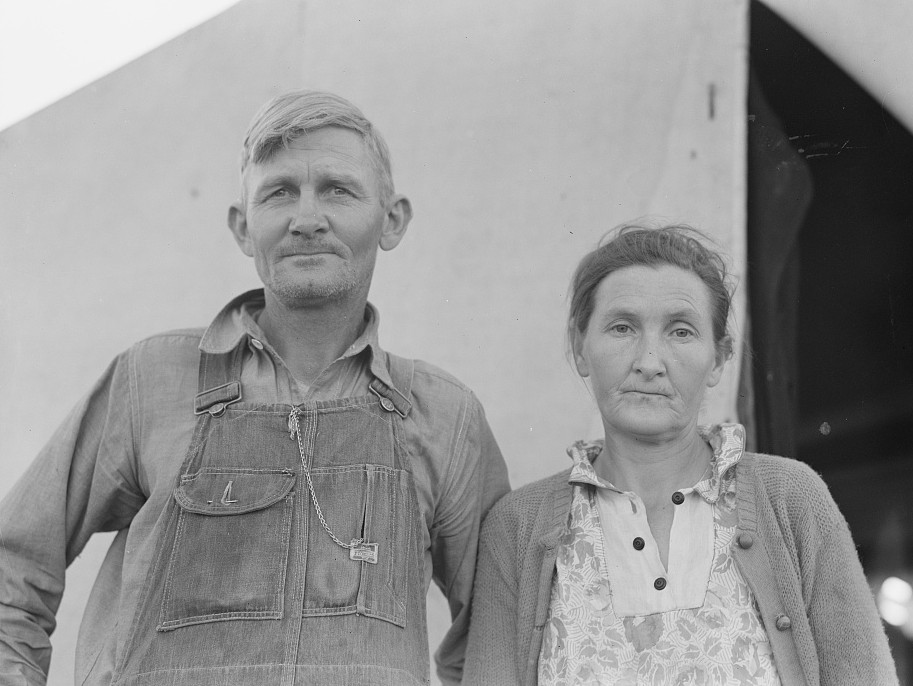
Tulare County. Farm Security Administration camp for migratory agricultural workers at Farmersville. Mother and child, come to California from Oklahoma. They have six children, aged two to nineteen years. The mother finished the eighth grade in school. They left their farming in Chicasha in the fall of 1936 to go to Arizona to pick cotton. They returned to Oklahoma to try again; failed and re-entered California February 27, 1938 to pick peas under a labor contractor. The father is chairman of camp council May 1939 photographer Dorothea Lange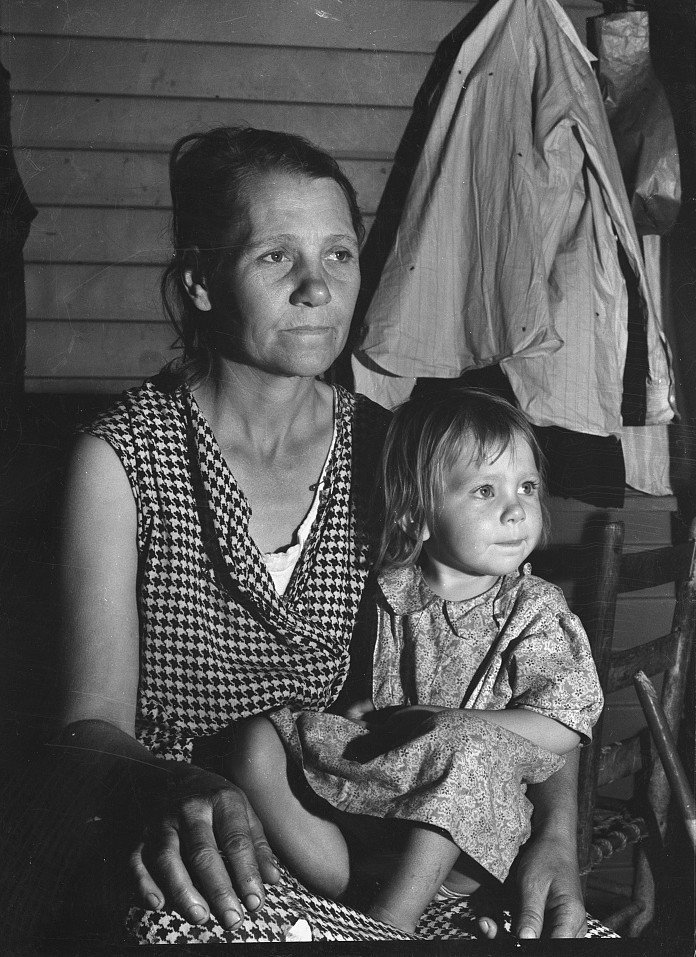
Vinegar of the Four Thieves was a recipe that was known for its antibacterial, antiviral, antiseptic and antifungal properties for years. It was even used to cure the Bubonic Plague. VINEGAR OF THE FOUR THIEVES: Recipes & curious tips from the past
